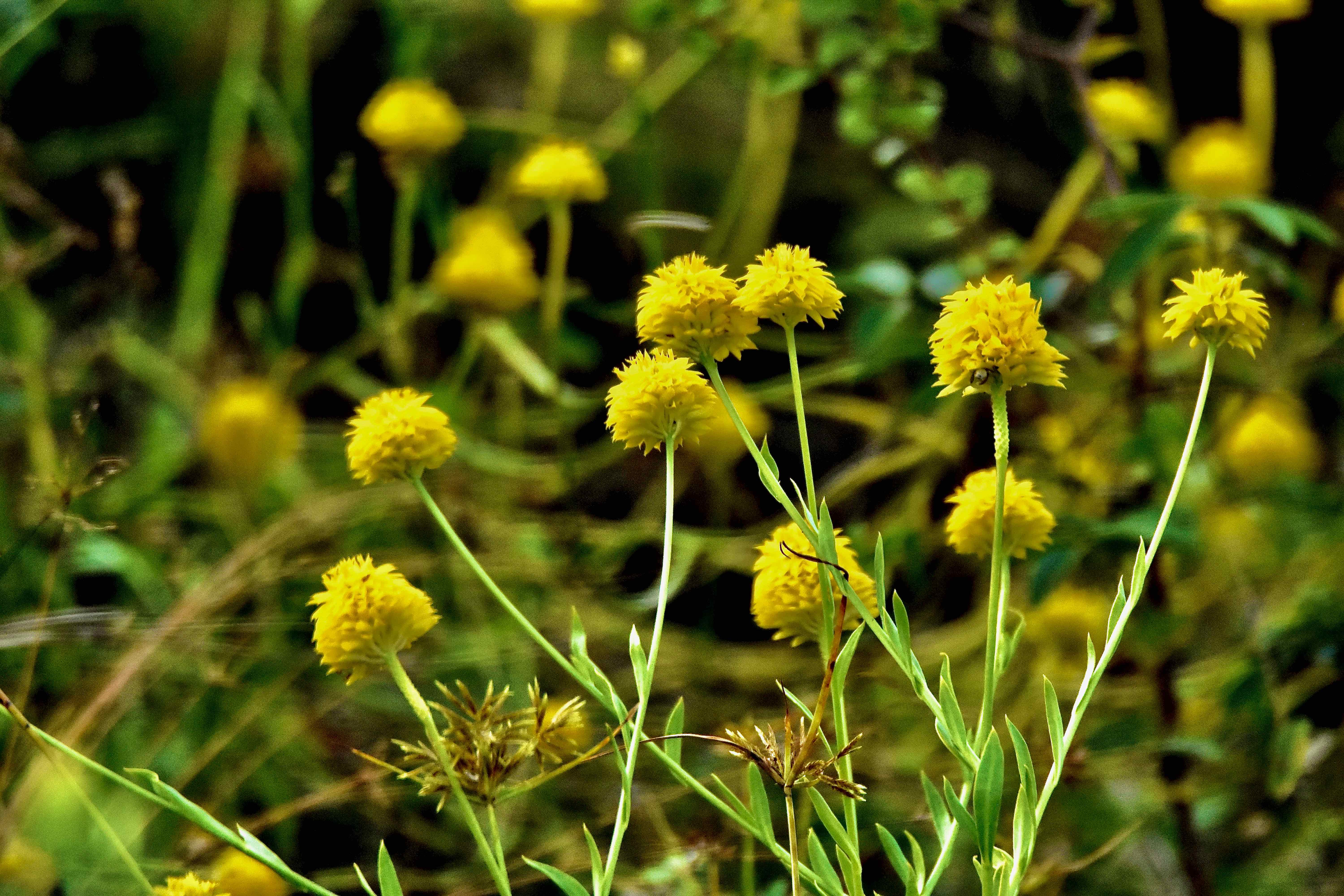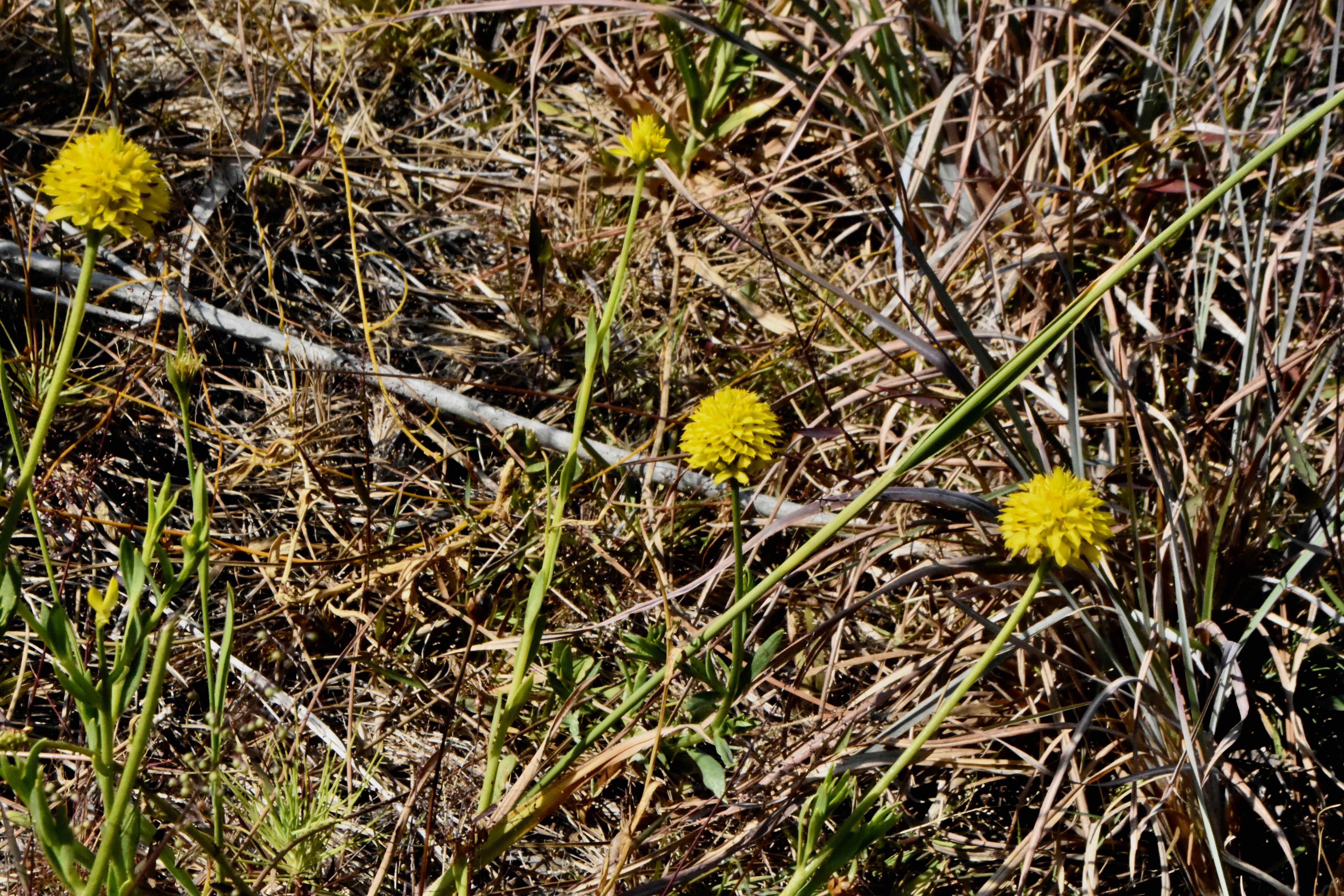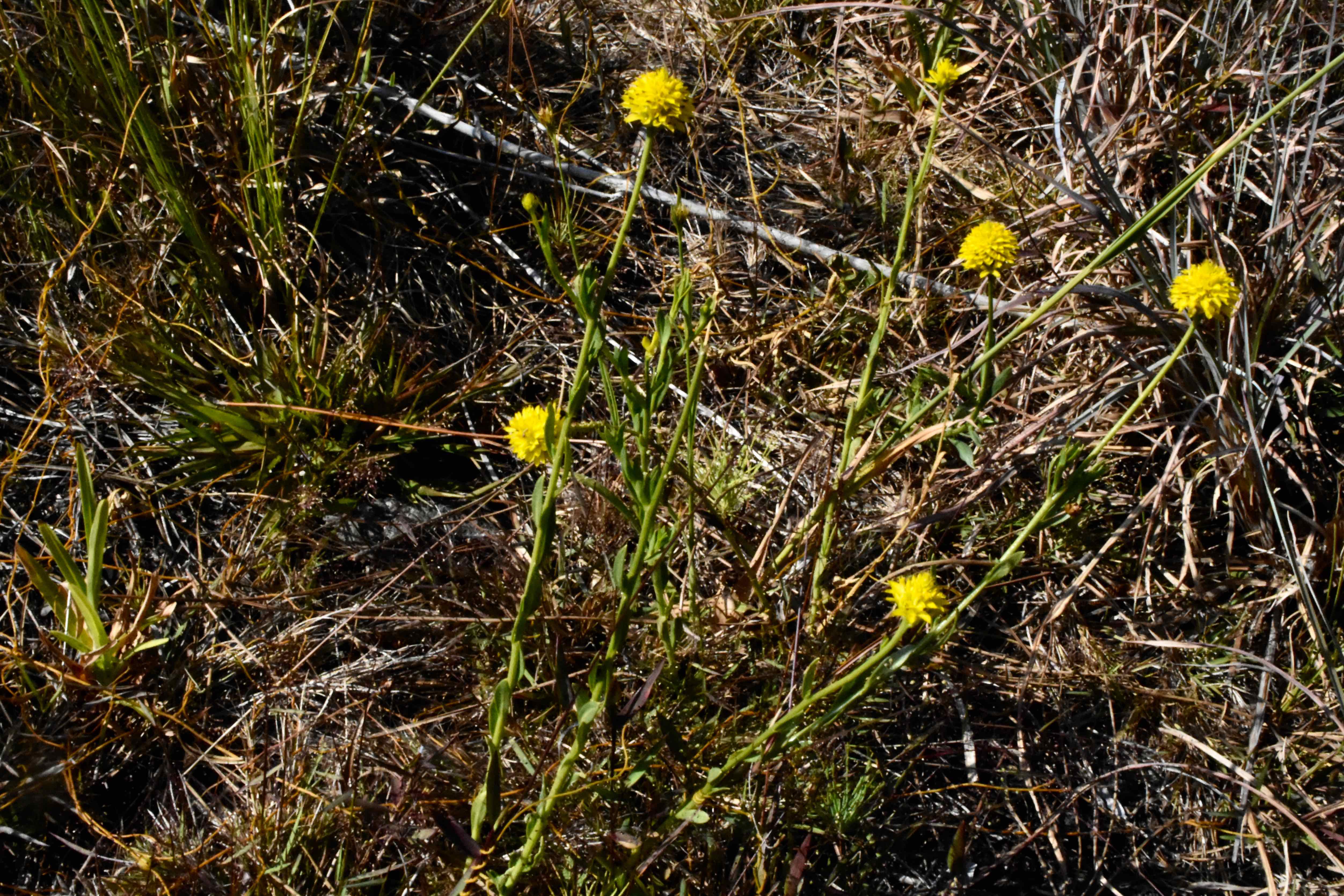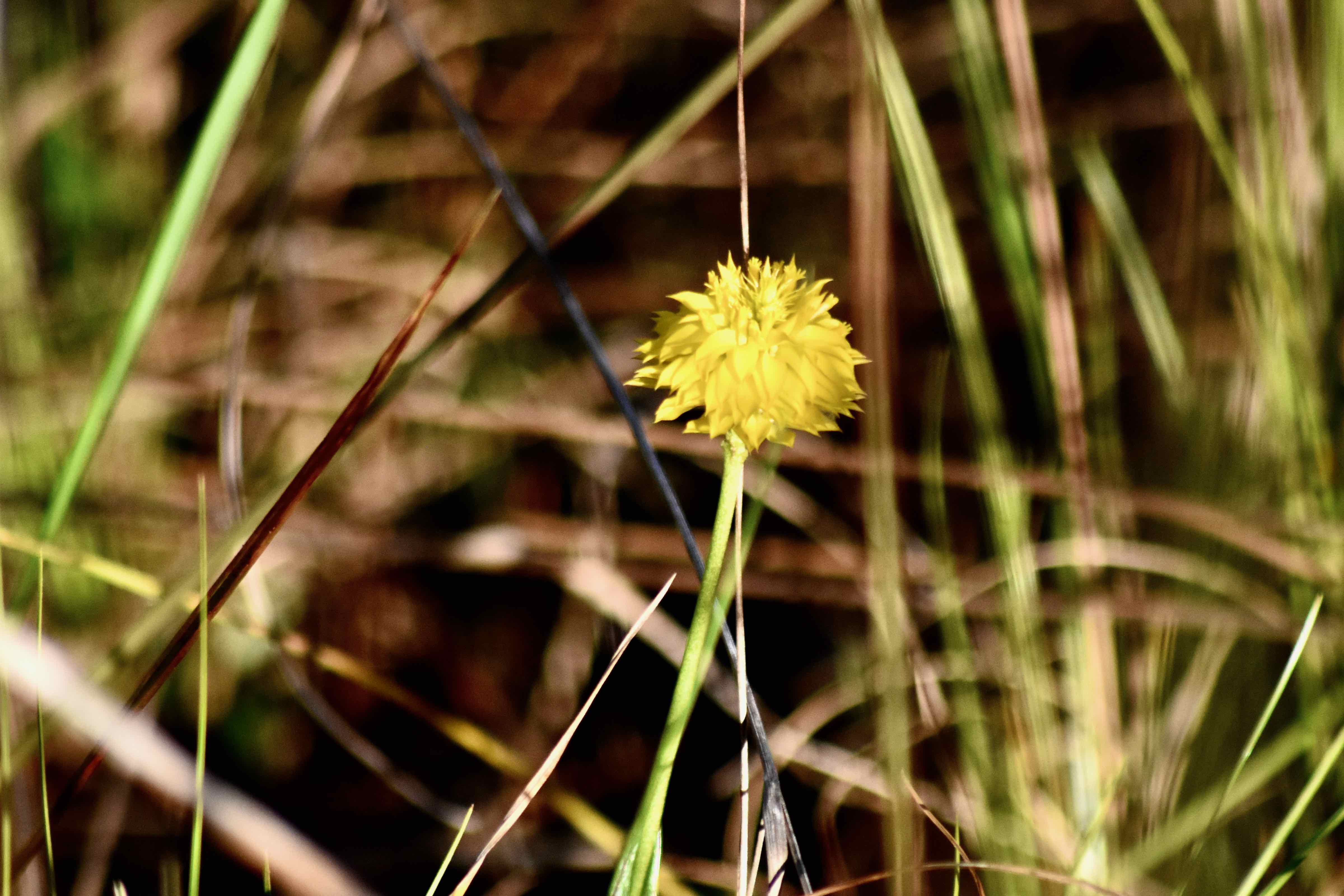
Big yellow milkwort, photographed at Merritt Island National Wildlife Refuge, Titusville, Brevard County, in October 2018.
You can't help but spotting big yellow milkwort, Polygala rugelii, when it's in bloom. When not in bloom, it's easily ignored. Move right along, there's nothing to see here.
Big yellow milkwort is a Florida native found throughout most of the Peninsula as far north as Nassau County. In fact, the only place in the world it grows is Florida. It is not found in Monroe County, either in the Keys or mainland, however.
It is a small, thin plant, with a rosette of leaves at the base. When it blooms in the spring and summer it sends up a single stalk with a round bud at the end. The flower it produces is about three-quarters to an inch across and spectacularly showy, well out of proportion for the plant from which it springs. The plants we've seen range between perhaps eight to 12 inches tall, but we've seen references saying big yellow can reach a couple of feet. Big yellow milkwort is usually an annual but can be biennial (two years) as well.
It should be noted here that there is another Polygala member sometimes referred to as yellow milkwort,Polygala lutea, given that name by none other than Carl Linnaeus. We call it orange milkworth, because the flowers are indeed bright orange, not yellow. Linnaeus worked with specimens months old, and the flowers of Polygala lutea turn yellow over time. Now back to our regular programming.
Big yellow grows in open, moist places where it can get plenty of sunlight. Habitats include savannas, marsh edges and wet pine flatwoods, where we found these plants growing.
The Institute for Regional Conservation lists 14 members of the polygala genus as present in South Florida, including big yellow milkwort. It lists several as being imperiled or critically imperiled, including big yellow; however, it is not listed as endangered or threatened either by the state or by the feds. Of all the milkworts in the region, this is probably the one we see the most, particularly in Palm Beach and Martin counties.
Big yellow relies on small insects for pollination as many plants do. But big yellow takes the process one step further, relying on small insects to distribute its seeds as well. According to Florida Ethnobotany by Daniel Austin, members of polygala have elaiosomes, or food bodies rich in fat and proteins, attached to their seeds.
Ants will grab the seed and haul it back to their nest, eat the food body and discard the seed outside in what Austin described as a "rich garbage heap," an open area with little competition for the next generation once the seeds germinate.
Big yellow blooms year-round, but flowers are more prevalent in summer and fall. The plant features a rosette of leaves at its base and along the stem, arranged alternately, with smooth edges. Leaves in the basal rosette are the largest and oval or spatula-like in shape and usually die off by the time plant blooms. The leaves become progressively smaller and more linear farther up the stem.
The genus name, Polygala means many milk — it was once believed that the presence of these plants in a field indicated a good place for cows to graze. The species name, Rugelii, honors 19th century British born botantist and physician Ferdinand Rugel, who studied plants of the southeastern United States.
Beyond its striking good looks, big yellow milkwort was a useful plant for Native Americans. The Seminoles used it to make a snake bite remedy and used it externally for arthritis. They also used it to treat something they called sapiyi sickness (as they did other milkworts), the symptoms of which included heart palpatations, yellow skin, swelling and shortness of breath. It was one of two polygala species that the Seminoles used.
Fun fact: the Florida Fish and Wildlife Conservation Commission says the roots of big yellow milkwort smell like vanilla. We have not tried to confirm this!
Big yellow milkwort is a member of Polygalaceae, the milkwort family. Other names include Rugel's milkwort, yellow milkwort and yellow batchelor's buttons.



